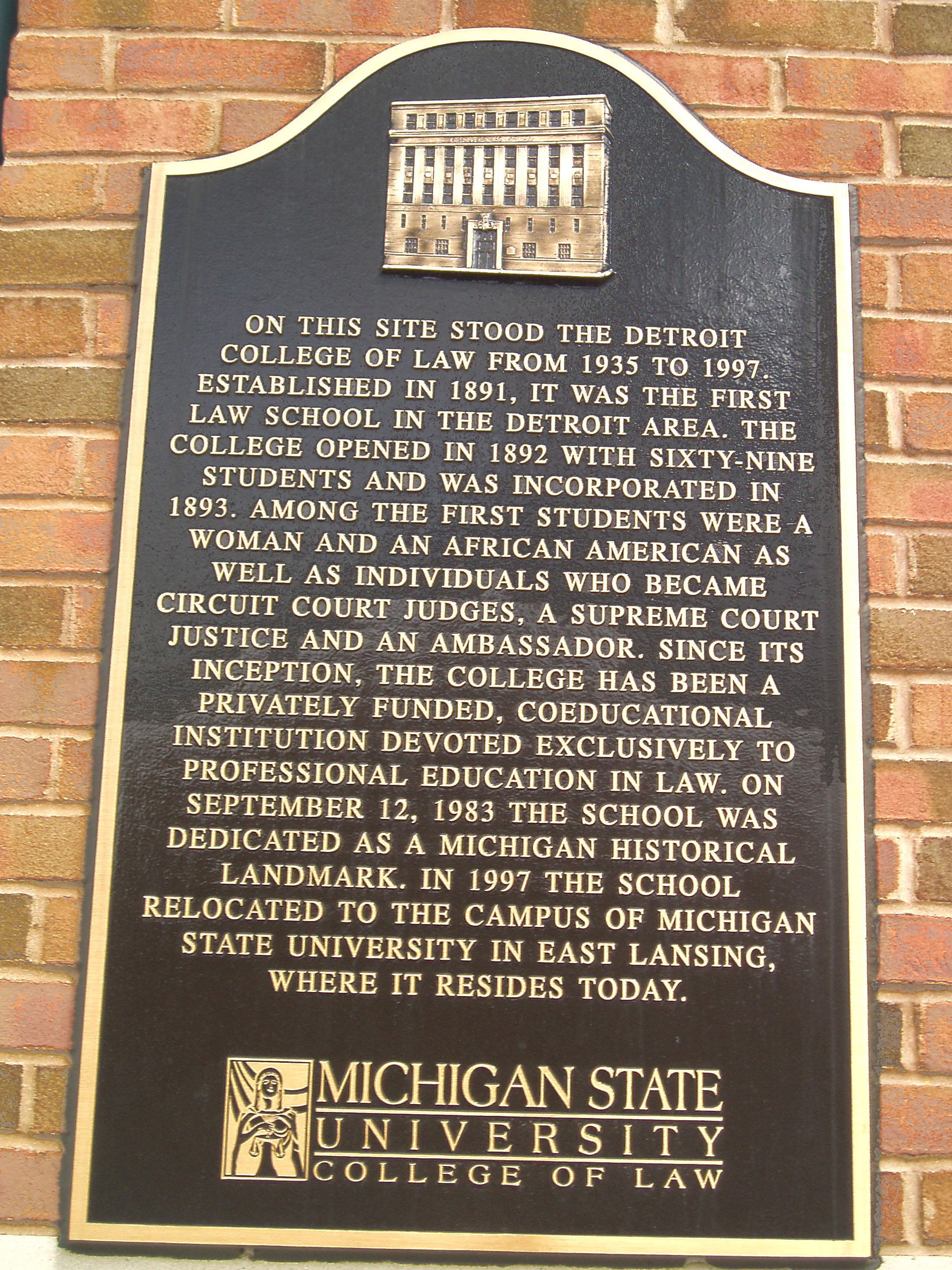

In many large US cities, private law schools were established by members
of the local bar. It was not too expensive to establish a law school. An extensive
library was needed, but just a few classrooms were required, and there were
no labs or expensive athletic fields to build.
The Detroit College of Law was the first school to provide formal training in the law in the City of Detroit. Recall that until the Twentieth Century, there were few formal requirements for an individual to become a lawyer. Indeed, the requirement that doctors complete rigorous formal training dates from the first decade of the last century. Most Nineteenth- and some early Twentieth-Century lawyers apprenticed and then proclaimed their profession. I believe that there are still six states that have no formal educational requirements for prospective lawyers. People may study the law on their own, pass the state’s bar examine and become a licensed lawyer. A tiny number of people enter the bar in this way.
The Detroit Law School served an obvious need, and apparently had a diverse student body. As the plaque indicates, the first class included a woman and an African-American. This law school prospered and a substantial and appropriately legalistic building was built on this site. This building was razed so that the Tigers might play upon the field that replaced it.
After World War II, bar associations and lawyers began to insist upon much more formal training. They called for a four-year undergraduate degree and then three years of law school before applicants might take the bar examination. Few of the private for-profit law schools that existed in American cities went out of business. Some of them increased their standards and requirements and prospered. Quite a few others became affiliated with universities that did not have law schools. As a result, quite a few former normal schools and four-year liberal arts colleges now proudly boast a law school. Frankly, law schools effectively generate much revenue for colleges since the students pay substantial tuitions, the facilities are not too expensive to maintain, the class sizes large and, quite frequently, prosperous alumni donate generously.
Detroit’s two major universities had their own law schools after World War II. The University of Detroit established a law school in 1912. In 1927, the first public law school in Detroit was created and affiliated with the Colleges of the City of Detroit. These were the various colleges being developed by the city’s school administrators to provide post-secondary opportunities. This public law school held its first classes in the Old Main Building and graduated its first class in 1928. The Colleges of the City of Detroit were merged to form a municipal university in 1933: Wayne University. In 1956, the state took over administration and the name was changed to Wayne State University.
Michigan State University did not have a law school. Rather than creating one, the Detroit College of Law moved to Lansing in 1997 and now serves as the MSU law school. Officially, the Detroit College of Law is a private-not-for-profit school, but it is affiliated with and administered by Michigan State. Some of the promotional materials of that school use the term Michigan State’s Detroit College of Law so the name has been retained but it is not greatly emphasized.
It is easy to confuse this school with others. The name Detroit College was used by the Jesuit Priests who established the college formerly located on East Jefferson in Dowling Hall. In the mid-1920s, their entrepreneurial president, Father McNichols, created a new campus for that college and the name was changed to the University of Detroit. The nation’s largest law school—in terms of enrollment—is the Thomas Cooley Law School, a private institution founded about 25 years ago. Their major campus is in Lansing, but they have satellite campuses; one located at Western Michigan in Kalamazoo and another in the suburbs of Detroit in Rochester. The popularity of the legal profession and the reasonable cost of starting one means that new law schools continue to be established. For example, Thomas Monahan funded the Ave Maria Law School that opened in Ann Arbor in the 1999.
City of Detroit Local Historic District: Not listed
State of Michigan Registry of Historic Places: Not listed
National Register of Historic Sites: Not listed
Use of site in 2005: Right field for Comerica Park
Photograph: Ren Farley; May, 2005